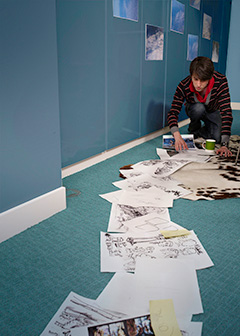Summary

| Quick Facts: Art Directors | |
|---|---|
|
$80,630 per year
$38.77 per hour |
|
| Bachelor’s degree | |
| 1 to 5 years | |
| None | |
| 73,900 | |
| 9% (Slower than average) | |
| 6,700 | |
What Art Directors Do
Art directors are responsible for the visual style and images in magazines, newspapers, product packaging, and movie and television productions. They create the overall design and direct others who develop artwork or layouts.
Work Environment
About 12 percent of art directors work for advertising and public relations firms. Others work for newspaper and magazine publishers, specialized design services firms, and the motion picture and video industries.
How to Become an Art Director
Art directors need at least a bachelor’s degree in an art or design subject and previous work experience. Depending on the industry, they may have worked as graphic designers, illustrators, copyeditors, or photographers, or in another art or design occupation, before becoming art directors.
Pay
The median annual wage of art directors was $80,630 in May 2010.
Job Outlook
Employment of art directors is expected to increase 9 percent from 2010 to 2020, slower than the average for all occupations. Art directors will continue to be needed to oversee the work of graphic designers, illustrators, photographers, and others who design in artwork or layouts.
Similar Occupations
Compare the job duties, education, job growth, and pay of art directors with similar occupations.
O*NET
O*NET provides comprehensive information on key characteristics of workers and occupations.
Contacts for More Information
Learn more about art directors by contacting these additional resources.










